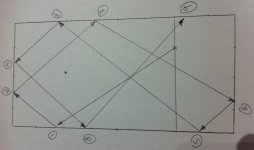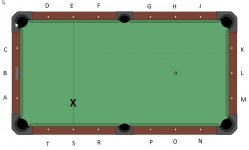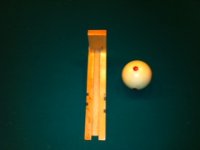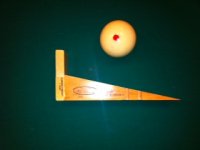Wow - 20MPH is FAST ! :-O
I got the predator break app - I couldnt even clock a speed over 20 MPH !
(Is that laughter I hear ?? :-D) LOL
My average for my fastest & hardest break shots was prolly around the 18 MPH mark.
I then tried the up & down the table tests again at (hopefully) similar speeds (my poor foot rail !) - I was always getting at least 4 rails - usually around 4&1/2 rails - couple of times was 1/2 a diamond off making 5 rails.
This warms my heart... IF a 'firm stroke' as mentioned in the BCA table specs equates to around 18 MPH ?
What do you guys get (how many rails) for the 'up & down test' @ around 18 MPH ?
Note: The predator app sometimes gave me a reading of 10 or 11 MPH when clearly it was nowhere near as slow as that... Hmmm its a handy app, but it doesnt seem even close to 100% reliable ?
Thanx
Cheers.
20 mph is a number I struggled to top, I had come close many times. Passed it only like 2 or 3 times.
I got some good break instruction from Tony Marcino and was able to finally pass it consistently,
though my cb was a little wild. Hardest break was 23.5.
I still don't have the break fully figured out but a few little changes made a real difference.
You'll be able to do it if you get the right instruction and put in a little practice.
The app works with sound and sometimes it gets fooled by other sounds in the room (in a pool hall, other breaks
throw it off). It listens for the click of the tip on the cue ball, and then the cue ball hitting the rack.
When the app comes back with a garbage result, you can click the edit button to see where the soundwaves spike.
If you can drag the sliders to the correct pair of sound spikes, you'll get a more accurate answer instead of some
goofy result like 5 mph or 99 mph.
When there's no sound interference, it's very accurate. Someone compared it to an actual radar gun and I believe
the app's results were within half a mile per hour.




